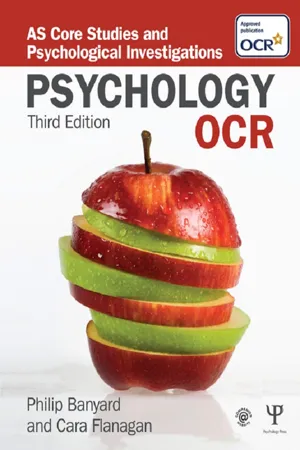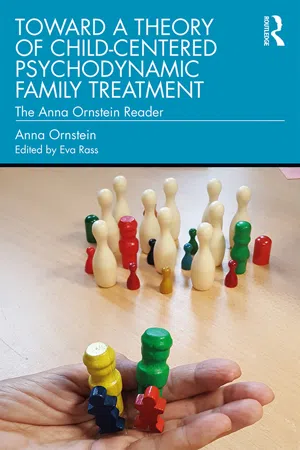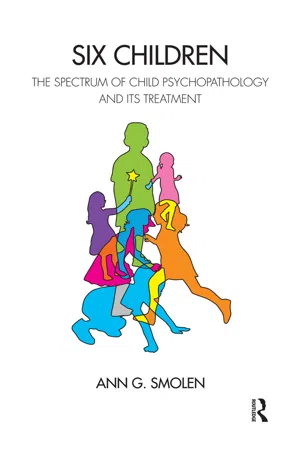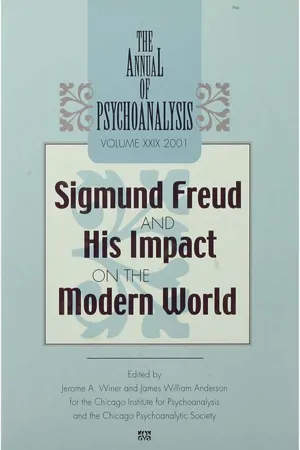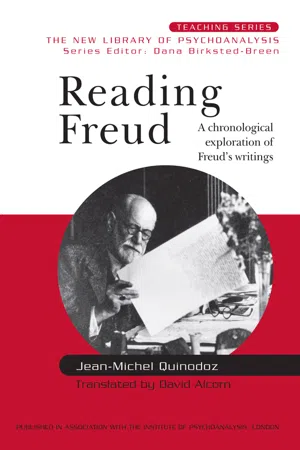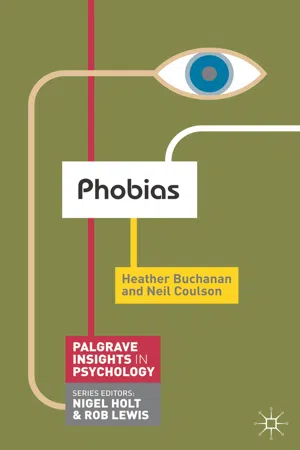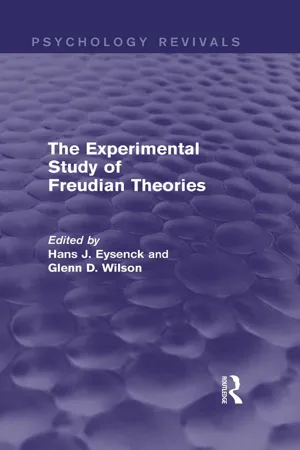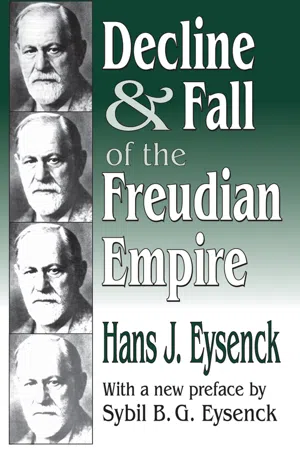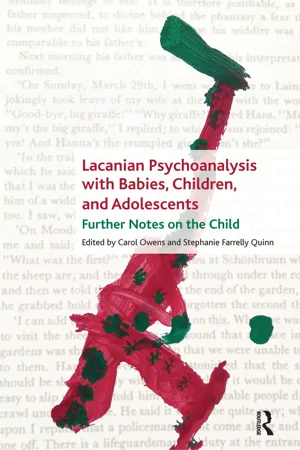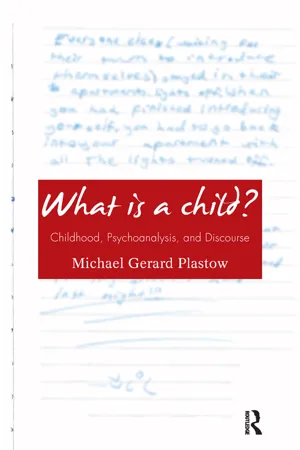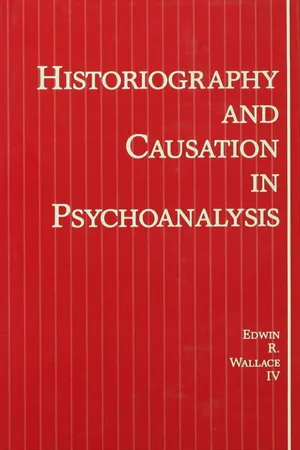Psychology
The Case Of Little Hans
"The Case of Little Hans" is a famous case study by Sigmund Freud, detailing the psychoanalytic treatment of a young boy with a phobia of horses. Freud used Hans' fear to explore his unconscious desires and conflicts, ultimately suggesting that the phobia represented Hans' fear of his father and his unconscious sexual desires for his mother. This case study is a key example of Freud's psychoanalytic approach to understanding childhood development and behavior.
Written by Perlego with AI-assistance
Related key terms
12 Key excerpts on "The Case Of Little Hans"
- eBook - ePub
OCR Psychology
AS Core Studies and Psychological Investigations
- Philip Banyard(Author)
- 2013(Publication Date)
- Psychology Press(Publisher)
The opportunity to study young Hans meant he could see if his theory about personality development would be supported. In particular The Case Of Little Hans related to the development of infantile sexuality and the Oedipus complex.There was a second aim for this study. During the period when Hans’ father was recording observations, Hans developed an intense phobia of horses. This provided Freud with an opportunity to also test his explanation of how phobias develop. Additionally it meant he could use his method of treatment (psychoanalysis) and demonstrate its usefulness.Qs 3.12
- Briefly explain why Freud was interested in this case study.
- Describe the sample in this case study.
- Explain why Hans’ father decided to undertake this case study.
- Explain why Hans developed a castration anxiety.
- Explain the concept of repression.
- Explain why Hans came to fear having baths.
- How did the holiday at Gmunden affect his relationships with his father and mother.
- Why did Hans resent his baby sister?
MethodParticipantThe participant in this case study is a boy called Little Hans who was aged between three and five during the period of this case study. The other main people involved were his father, mother and sister. They lived in Vienna, Austria at the beginning of the twentieth century (Hans was born in 1904).ProcedureHans’ father was one of Freud’s closest ‘followers’, a member of Freud’s Wednesday night study group. He was keen to put Freud’s ideas of psychoanalysis into practice. Psychoanalysis involves the interpretation of a patient’s thoughts and fantasies so that the patient can come to understand them himself.Hans’ father recorded events and conversations with Hans and sent these regularly to Freud. Both Freud and the father offered interpretations of Hans’ behaviour. On one occasion during the case study Hans was taken to meet Freud.A drawing Hans made of a giraffe. He asked his father to add the widdler but his father said ‘Draw it yourself'Results: Hans' early lifeLittle Hans and his ‘widdler'Just before he was three, Hans started to show a lively interest in his ‘widdler’. Hans observed that animals had big ones, especially an animal like a horse. He assumed that both his parents must have big ones because they were fully grown. - eBook - ePub
Toward a Theory of Child-Centered Psychodynamic Family Treatment
The Anna Ornstein Reader
- Anna Ornstein, Eva Rass, Eva Rass(Authors)
- 2020(Publication Date)
- Routledge(Publisher)
7 Little HansHis phobia and his Oedipus complex (“The Analysis of a Phobia in a Five-Year-Old Boy,” 1909)
Anna Ornstein
7.1 A historical perspective
The historical significance of The Case Of Little Hans can best be appreciated when the time of its publication is placed into the context of the evolution of Freud’s theory of the neurosis. “The Analysis of a Phobia in a Five-Year-Old Boy” was published in 1909, before Freud postulated an aggressive drive, before the second theory of anxiety and the formulation of the structural theory. In 1905, Freud had finished “The Three Essays on the Theory of Sexuality,” in which he suggested that “the motive force” of all neurotic symptoms of later life could be found in the vicissitudes of the sexual instinct and where he postulated that anxiety arose in relation to inadequately discharged libido.As a researcher, Freud (1909) was eager to find proof for his theory and suggested that “surely there must be a possibility of observing in children at first hand and all the freshness of life the sexual impulses and wishes which we dig out so laboriously in adults from among their own debris …” (p. 6). It was important for Freud to find evidence of the existence of infantile sexuality and the affects associated with the Oedipus complex because, for him, solving the riddle of the psychoneuroses meant solving the riddle of the workings of the mind.Placing the Oedipus complex into the center of the psychoneuroses had far-reaching consequences for the evolution of psychoanalytic theory, specifically, in relation to repression as a mental mechanism. Because the development of this crucial psychological mechanism, more than any other, is related to the resolution of the Oedipus complex, once the mechanism of repression was understood, other basic psychoanalytic concepts could be elaborated: infantile amnesia; the theory of psychic trauma and symptom formation; the evolution of primary process thinking into secondary process; and the transition from the pleasure principle to the reality principle. - eBook - ePub
Six Children
The Spectrum of Child Psychopathology and its Treatment
- Ann G. Smolen(Author)
- 2018(Publication Date)
- Routledge(Publisher)
Chapter One Child analysis—a brief historical review of its developmentOne of the earliest published papers about a child’s treatment was Analysis of a Phobia in a Five-Year-Old Boy (Freud, 1909b), often referred as Little Hans. Little Hans’s analysis holds a special place in the history of child psychoanalysis, as it was the first case study of an infantile neurosis; however, the material was not retrieved from a reconstruction of an adult analysis, but rather was a treatment conducted by the father through Sigmund Freud’s instructions. Little Hans’s castration anxiety (his presenting symptom) and his Oedipus complex were interpreted by Freud through his understanding of his work with adult patients. Because Freud conducted the whole treatment via the father, there was no real elaboration of child analytic technique, thus confusion developed as future child analysts attempted to differentiate child guidance/parent education from child analysis. It was felt, at that time, that a troubled child was helped through his parents. Child analysts did not have a child analytic technique or a well-defined method of treatment. They struggled with differentiating between parental education and parent guidance and what was deemed child analysis. To complicate matters, there was also confusion as to the differences between child psychotherapy and child analysis. For years to come, the case study of Little Hans was the first introduction to child analysis for child psychotherapy candidates (Young-Bruehl, 2007).Anna Freud stated that The Case Of Little Hans “pointed toward a general theory of development” (Freud, 1980, p. 278), but did not contribute to child analytic technique. Anna Freud further clarified that her father “looked to Hans’s neurosis, his phobia, for confirmation of a hypothesis about how infantile sexuality components are the motive forces of all neurotic symptoms of later life” (Freud, 1980, p. 279). Anna Freud described her father’s hypothesis in The Infantile Neurosis when she wrote: “… conflict, followed by regression, regressive aims arousing anxiety; anxiety warded off by means of defense; conflict solution via compromise; symptoms” (Freud, 1970, p. 191). Young-Bruehl points out that Anna Freud summarizes in her book The Ego and Mechanisms of Defense - eBook - ePub
The Annual of Psychoanalysis, V. 29
Sigmund Freud and His Impact on the Modern World
- (Author)
- 2013(Publication Date)
- Routledge(Publisher)
In that regard she was close to her father's position in his work with Little Hans. Her eventual emphasis on analyzing defenses with children is also similar to her father's approach. Although she never deviated from the instinctual-drive theory, she paid more attention than had her father to the child's defenses and the child's adaptation to his or her environment. The more recent formulations of self psychology (Kohut, 1971) also focused on parental behavior, specifically on empathy for the child, or the lack thereof, as crucial both in normal development and in psychopathology. These controversies between the two giants of child analysis—Anna Freud and Melanie Klein—often obscured the contributions of others and interfered with a more robust development of the field. In spite of Sigmund Freud's one-dimensional technique, child analysis began with his undertaking of The Case Of Little Hans. He used the case to illustrate his ideas on infantile sexuality and to document the oedipal phase of psychosexual development. It also served to demonstrate the value of psychoanalytic developmental formulations in understanding and ameliorating neurotic symptoms. Although the primary value of the case rests on its elaboration and support of a developmental framework of infantile sexuality it also has a bearing on ego psychology, psychoanalytic developmental theory, and principles of technique in child analysis. For the clinician who works with children, The Case Of Little Hans is valuable because of two basic elements: it is a method of eliciting meaningful clinical data from a child and a developmental framework whereby these data can be organized in a useful manner. Freud's technique via the father evolved as he worked with the material presented by the child. At first, Freud suggested reassurance that the fear of horses was nonsense, and he urged the father to educate and enlighten Little Hans about sexuality - eBook - ePub
Reading Freud
A Chronological Exploration of Freud's Writings
- Jean-Michel Quinodoz(Author)
- 2013(Publication Date)
- Routledge(Publisher)
“Analysis of a Phobia in a Five-Year-Old Boy (‘Little Hans')” (1909b)
DOI: 10.4324/9781315783109-11The first ever child analysisThis case study is an account of the very first psychoanalytical treatment of a child. It was the little boy’s father, Max Graf, who conducted the treatment of “Little Hans” (alias Herbert Graf), a quite common practice at the time. The analysis lasted from January to May 1908 and was supervised by Freud on the basis of the observations the boy’s father noted down and communicated to Freud. Freud himself took an active part on only one occasion – a discussion with both father and son which was to prove decisive. Freud wrote an account of the treatment and, with the father’s permission, published it in 1909. This article appeared in the first issue of the psychoanalytical review, the Jahrbuch für Psychoanalytische und Psychopathologische Forschungen, which the first Psychoanalytical Congress in Salzburg the previous year had decided to found. Though the review did not last long, it was published until the outbreak of the First World War.What can we learn from this case study? First, “Little Hans” provided Freud with “proof” – which he very much needed – of the accuracy of his hypotheses concerning the existence of sexuality in children in general. Second, the ability to cure a case of phobia was an excellent illustration of how the therapeutic potential of psychoanalysis could be used not only with adults but also with children.Biographies and history“Little Hans”: a brilliant career as director of opera
Little Hans’s parents were no strangers to Freud because his mother, Olga Graf, had been analysed by Freud some years previously. Hans’s father, Max Graf, was a composer and music critic; he had met Freud in 1900 and, passionately interested in the discoveries which psychoanalysis was making, regularly took part in the meetings of the “Psychological Wednesday Society” until 1913. From 1906 on, when Little Hans was not quite 3 years old, Max Graf began sharing with Freud the observations he was making of his son. In so doing, he was acceding to Freud’s request that his closest followers should take notes on everything which had to do with infantile sexuality so as to buttress the hypotheses he had put forward in Three Essays on the Theory of Sexuality in 1905. Freud used some of the observations made by Little Hans’s father in two articles, “The Sexual Enlightenment of Children” (Freud - eBook - ePub
- Heather Buchanan, Neil Coulson(Authors)
- 2012(Publication Date)
- Bloomsbury Academic(Publisher)
oedipal conflict . The Oedipus Complex is where a young boy develops an intense sexual love for his mother and because of this he sees his father as a rival and wants to get rid of him. In terms of specific phobia, probably the most well-known Freudian case study is that of Little Hans who had a phobia of horses. Little Hans, Freud argued, was afraid of horses because the horse was a symbol for his father. For example, the black bits around the horse’s face reminded Hans of his father’s moustache and the blinkers reminded him of father’s glasses. Freud believed that as Hans fantasised about being married to his mother he feared his father’s retaliation. Therefore, Hans displaced his fear of his father onto horses because they reminded him of his father.This is an interesting explanation for how the young boy came to acquire his horse phobia, but as with most of Freud’s psychodynamic explanations it suffers from being difficult to disprove. The theory is difficult to test empirically and phobia researchers have tended to turn more to contemporary perspectives of phobia acquisition such as conditioning theories detailed below.Classical conditioningThe behaviourist approach, pioneered by John Watson, was in direct opposition to the work of Freud. He believed that psychologists should adopt the scientific method, and study only things that could be directly observed such as behaviour and the environmental conditions that produce it. Watson’s big innovation was to apply the idea of conditioning to human behaviour. This was a concept that had originally been studied by Ivan Pavlov in the late nineteenth century in his famous salivating-dog experiment. During his research on the physiology of digestion in dogs, Pavlov noticed that, rather than simply salivating in the presence of meat powder (an innate response to food that he called the unconditioned response or UCR), the dogs began to salivate in the presence of the lab technician who normally fed them. From this observation he predicted that, if a particular stimulus in the dog’s surroundings was present when the dog was presented with meat powder, then this stimulus would become associated with food and cause salivation on its own (this learned response is referred to as the conditioned response; CR). In his initial experiment, Pavlov used a bell to call the dogs to their food and, after a few repetitions, the dogs started to salivate in response to the bell. The previously neutral stimulus (the bell) that now triggers the conditioned salivation is called the conditioned stimulus (CS), as opposed to the meat powder which is the unconditioned stimulus (UCS). - eBook - ePub
Freud: The Key Ideas
Psychoanalysis, dreams, the unconscious and more
- Ruth Snowden(Author)
- 2017(Publication Date)
- Teach Yourself(Publisher)
Freud saw the case as a study of castration anxiety, resulting from several factors including the birth of a younger sister, an emerging Oedipus complex, and anxiety about masturbation. During the course of the analysis, Hans’s behaviour did improve, possibly because he was getting more attention from his father. Whatever the truth of the matter, Freud reported meeting Hans later as a strapping lad of 19 who suffered from no troubles or inhibitions.Key ideaRAT MANFreud’s explanation of Little Hans’s problem is an example of how he would sometimes jump to conclusions in order to make them fit his theories. It seems more likely that the child was simply afraid of horses – after all, they can seem pretty huge and threatening when one is very small. The case also illustrates one of the problems of trying to assess the effectiveness of psychoanalysis: would Hans simply have got over his phobia anyway?This case study was published in 1909, entitled ‘Some Remarks on a Case of Obsessive-Compulsive Neurosis’. The patient, whose real name was Ernst Lanzer (1878–1914), was a 29-year-old lawyer who first came to see Freud in 1907. He had obsessional thoughts and displayed obsessive behaviour. He gained his nickname from his idea that someone who was dear to him, such as his father, or a woman he admired, might be punished by having their body eaten away by rats. Oddly enough, this obsession continued in relation to the man’s father even though he had died some years previously. But the Rat Man’s worst fear had originated from a story he had been told while serving in the army. It was about an Eastern punishment where the victim had a pot containing a rat tied to his buttocks, with the evil intent that the rat would eventually gnaw its way out via the person’s anus.Freud’s interpretation of this obsession was that Rat Man had conflicting urges of both love and aggression towards people who were close to him, originating in childhood sexual conflicts. The obsession was actually useful to the patient because it prevented him from making difficult decisions in his current life and at the same time warded off the anxiety that would arise if he faced his real conflicts. - Hans J. Eysenck, Glenn D. Wilson(Authors)
- 2013(Publication Date)
- Routledge(Publisher)
It is well known that especially in children many phobias decline and disappear over a few weeks or months. The reason for this appears to be that in the ordinary course of life generalized phobic stimuli may evoke anxiety responses weak enough to be inhibited by other emotional responses simultaneously aroused in the individual. Perhaps this process was the true source of Little Hans's recovery. The interpretations may have been irrelevant, or may even have retarded recovery by adding new threats and new fears to those already present. But since Hans does not seem to have been greatly upset by the interpretations, it is perhaps more likely that the therapy was actively helpful, for phobic stimuli were again and again presented to the child in a variety of emotional contexts that may have inhibited the anxiety and in consequence diminished its habit strength. The gradualness of Hans's recovery is consonant with an explanation of this kind (Wolpe, 1958). Conclusions The chief conclusion to be derived from our survey of The Case Of Little Hans is that it does not provide anything resembling direct proof of psychoanalytic theorems. We have combed Freud's account for evidence that would be acceptable in the court of science, and have found none. In attempting to give a balanced summary of the case we have excluded a vast number of interpretations but have tried not to omit any material facts. Such facts, and they alone, could have supported Freud's theories. For example, if it had been observed after Gmunden that Hans had become fearful of his father, and that upon the development of the horse phobia the fear of the father had disappeared, this could reasonably have been regarded as presumptive of a displacement of fear from father to horse- eBook - ePub
- Hans Eysenck(Author)
- 2018(Publication Date)
- Routledge(Publisher)
because of his ‘enlightened’ upbringing. ‘Since he was brought up without being intimidated and with as much consideration and as little coercion as possible his anxiety dared to show itself more boldly. With him there was no place for such motives as a bad conscience or fear of punishment which with other children must no doubt contribute to making the anxiety less.’ This ambiguity in Freud’s argument makes testing his hypotheses completely impossible.In turning to The Case Of Little Hans, we are fortunate in having available the critical review and alternative interpretation by Professors J. Wolpe and S. Rachman; I have followed their enlightening discussion in some detail because it illustrates beautifully the illogical elements in Freud’s theorizing, and the importance and rationality of the alternative hypothesis they propose. Briefly, then, little Hans was the son of a psycho-analytically inclined father who was in close contact with Freud. In early January, 1908, the father wrote to Freud that Hans, then five years old, had developed ‘a nervous disorder’. The symptoms he reported were fear of going out of doors, depression in the evening, and fear that a horse would bite him in the street. Hans’s father suggested that ‘the ground was prepared by sexual over-excitation due to his mother’s tenderness’ and that the fear of the horse ‘seems somehow to be connected with his having been frightened by a large penis’. The first signs appeared on 7 January when Hans was being taken to the park, as usual, by his nursemaid. He started crying and said he wanted to ‘coax’ (caress) with his mother. At home, asked why he had refused to go any further, he ‘had cried, but he would not say’. The following day, after hesitations and crying, he went out with his mother. Returning home Hans said, after much internal struggling, ‘I was afraid a horse would bite me - eBook - ePub
Lacanian Psychoanalysis with Babies, Children, and Adolescents
Further Notes on the Child
- Stephanie Farrelly Quinn, Carol Owens, Stephanie Farrelly Quinn, Carol Owens(Authors)
- 2018(Publication Date)
- Routledge(Publisher)
Introduction Further notes on the child ...Carol Owens and Stephanie Farrelly QuinnWhat in sum, is Little Hans? It is the babbling of a five year old child between January 1st and May 2nd, 1908. This is what Little Hans is for the reader who is not prepared. If he is prepared, and it is not hard to be, he knows that these stories have some interest. Why are they interesting? They are interesting, because it is suggested, at least in principle, that there is a relation between this babbling and something that is completely consistent, namely a phobia, with all of the troubles that it brings to the life of a young subject , all of the worry it arouses in his entourage, all of the interest it provokes in Professor Freud.(Lacan, 5th June 1957, our emphasis)In the long trajectory of his teaching Lacan did not say or write very much exclusively about psychoanalytic practice with children, with “young subjects”. What he did say and write about it—even though we should admit that this took place mainly in the margins of his teaching—is regarded however as being of fundamental clinical significance and pertinence by Lacanian psychoanalysts, whether working with children or older subjects in analytic treatments. For the most part, the remarks which he made emerged at key points and moments, in the theorising, and critique, of psychoanalytic concepts and themes which he chose to examine in his seminar spanning some thirty years, and in his Écrits and other papers. For instance, in his “Presentation on Psychic Causality” (Lacan, 1946) he elaborates on his “Mirror Stage” theory as the means by which he was able to outline the psychological genesis of psychical causality insofar as it is grounded in the operation of identification of the individual with his or her semblables (Lacan, 1946, p. 154). Be that as it may, the widely referenced “Mirror Stage” article is a really good example of a piece of Lacan’s work which has implications for the psychoanalytic conceptualisation of “the child” even as it is interrogates the notion of ego development, and mobilises the essential Lacanian discovery of the ego in its function as misrecognition (Lacan, 1949, p. 76; and see Fortune, Chapter Sixteen in this volume). In fact, there is rich material of clinical relevance for the psychoanalyst working with children from his very early work on the “Family Complexes” (Lacan, 1938), as well as from nearly every one of the early seminars, taking into account that it is during the 1950s, especially in those places where he charts the paternal function and metaphor, the graphs of desire, and attendant commentaries on need and demand, and on “clinical structure”, that we find the remarks about the young subject and the child more frequently referenced than in the later seminars (especially after Seminar X - eBook - ePub
What is a Child?
Childhood, Psychoanalysis, and Discourse
- Michael Gerard Plastow(Author)
- 2018(Publication Date)
- Routledge(Publisher)
With this end in view I have for many years been urging my pupils and my friends to collect observations of the sexual life of children—the existence of which has as a rule been cleverly overlooked or deliberately denied. Among the material which came into my possession as a result of these requests, the reports which I received at regular intervals about little Hans soon began to take a prominent place. (p. 6)Thus, in one way, it was Sigmund Freud himself who initiated the psychoanalytic investigation of children, but upon the basis of supposedly confirming the material (p. 6) that had emerged from the analyses of adults, rather than for the treatment of childhood neuroses. This was not just any “material”, but specifically what was considered to be that of infantile sexuality. Thus the “observations” of little Hans—of his behaviour, but also of his speech—took place initially to record his normal infantile sexuality. It was fortuitous then that Hans, during the course of these observations, developed a phobia that became the focus of the case history. Given this emphasis of confirming what was uncovered from the analyses of adults, it is perhaps in this sense that Freud is able to say at the end of the case history that, “Strictly speaking, I learnt nothing new from this analysis, nothing that I had not already been able to discover (though often less distinctly and more indirectly) from other patients analysed at a more advanced age” (p. 147). It was a disappointment for Freud that his call for infant observations revealed nothing new about infantile sexuality. The infantile always, necessarily, remained at a distance. But from this point of view, there is strictly no difference between the analysis of adults and that of children.Even though little Hans’ father was nominally in the place of his son’s analyst, the transference was referred back to Freud and it was indeed Freud who took responsibility for it by intervening indirectly with the father and directly with Hans himself. Freud was effectively in the place of analyst, of symbolic third, as is evident from Hans’ own words. For Lacan the transference is established by the positing of a subject—the analyst—who knows something regarding the patient’s suffering: le sujet supposé savoir - eBook - ePub
- Edwin R. Wallace, IV(Authors)
- 2013(Publication Date)
- Routledge(Publisher)
Then he took a big borer and stuck it into my stomach.... The plumber came; and first he took away my behind with a pair of pincers, and then gave me another, and then the same with my widdler" (Freud, 1909b, pp. 65, 98; Freud's italics). In regard to Little Hans' speculations about where babies come from consider the following: Hannah [his baby sister, whose birth precipitated his neurosis] travelled with us to Gmunden in a box like that [his mother would have been pregnant with her then]. Whenever we travelled to Gmunden she travelled with us in the box. You don't believe me again? Really, Daddy. Do believe me. We got a big box and it was full of babies (ibid, p. 69). Hanna just came. Frau Kraus [the midwife] put her in the bed. She couldn't walk, of course. But the stork carried her in his beak. . . . The stork came up the stairs to a landing. . . and he had the right key and unlocked the door and put Hanna in your [his father's] bed, and Mummy was asleep—no, the stork put her in her bed' (ibid, p. 71, Freud's italics). Do you know how the stork opens the box? He takes his beak—the box has got a key too—he takes his beak, lifts up one (i.e., one-half of the beak) and unlocks it like this (ibid, p. 78). The lock-key-box symbolism virtually explains itself from the context, with little need to invoke psychic unity or universal symbolism. Nevertheless, this case report also makes evident the role of theory. Without a prior appreciation of psychoanalytic developmental psychology and psychodynamics, Hans' father would not have grasped the full significance of the defensive aspects of Hans' behavior and the nature of the dangers he feared. Since in the Little Hans case Freud had access, through the father, to events which would ordinarily (in the analysis of adult neurotics) have to be reconstructed, this treatment reflects a somewhat different species of history-writing—closer to contemporary chronicle than to historiography—than that in the Rat Man
Index pages curate the most relevant extracts from our library of academic textbooks. They’ve been created using an in-house natural language model (NLM), each adding context and meaning to key research topics.
